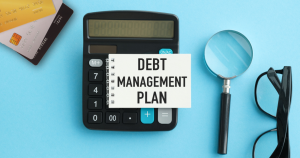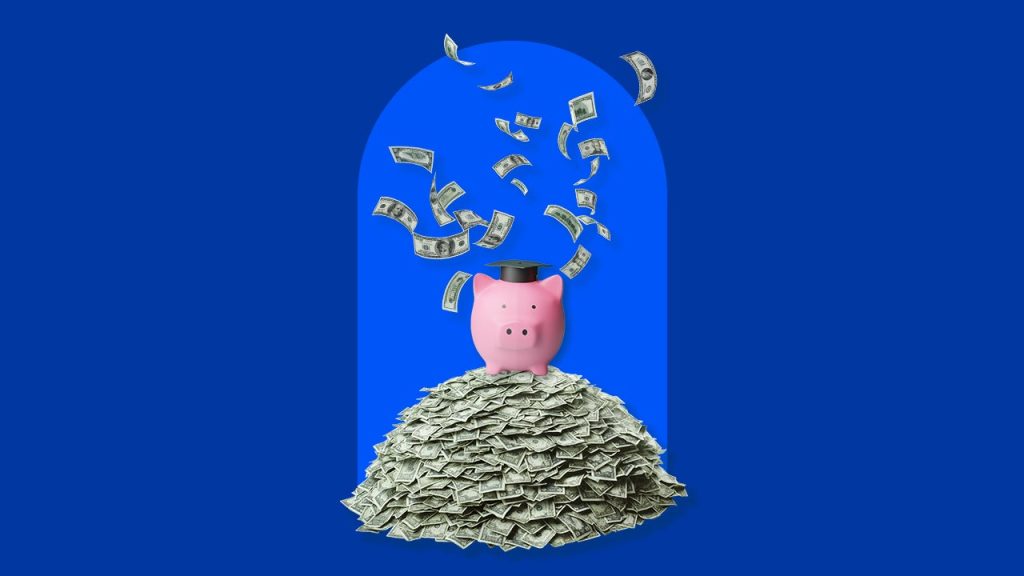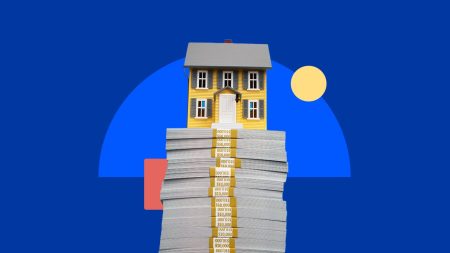I’ll never forget the weight of my $72,000 graduate student loan bill. It didn’t just affect my bank account — it shaped my daily spending choices, delayed my dreams and literally kept me up at night with anxiety, wondering if I’d ever truly feel free.
At my lowest point, I was sobbing with shame and regret. Then, I made a decision that changed everything: I was going to pay off my student loans in two years. What happened next surprised even me. I paid them off in one year, instead of the prescribed ten.
If student loans are crushing your dreams, here’s the step-by-step plan I used to crush them first. Spoiler alert: It will take shifting your money habits and creating a game plan, but the financial and emotional freedom on the other side is so worthwhile.
Step 1: Set a bold payoff date
Choose a date when you want to be free of your student debt. Be audacious about it, even if it feels unrealistic. I chose two years to pay off $72,000, which felt impossible.
To avoid the overwhelming feeling of paying down such a massive debt, I reverse-engineered the numbers until I got to an amount that felt doable:
- $72,000 in two years is $36,000 a year. That was more than my salary at the time.
- $36,000 a year divided by 12 months was $3,000 a month. Wow, that still feels insurmountable.
- $3,000 a month is about $750 per week. Could I possibly earn that much working retail?
- $750 per week is a little over $100 a day. Bingo — I believed I was capable enough to find $100 a day, or at least try.
Start with your total loan amount and drill down to the month or week level to set your debt payoff goal. I realized that the only person who would know if I failed was me (and my partner, if I told him), and that freedom to fail quietly gave me permission to try different solutions loudly.
Step 2: Dig into the details of your debt
It’s tempting to keep stressful debt out of sight and out of mind, but you can’t crush what you can’t see. Put pen to paper and gather all the details of your debt, including:
Some people like spreadsheets, but I prefer to see everything in my own handwriting. I grabbed a notepad and listed every single loan I had. It wasn’t pretty, but it was necessary.
I used a student loan calculator to understand how much interest I would accrue by paying the minimum amount. Seeing that enormous number helped fuel my urgency to get out from under my debt, and fast. Some experts will tell you to pay them off according to the highest interest rate, also known as the debt avalanche.
But for me, someone with diagnosed anxiety and depression who is highly motivated by small and early wins, I opted for the debt snowball method — listing the debts from smallest to largest balance and paying them off in that order.
Money coach tip
Many of the people I coach who are overwhelmed by their student loan burden find this method to be the most gratifying. They enjoy reducing the list of debts, line by line, much like the satisfaction you get from checking off a daily to-do list.
Step 3: Deploy savings that aren’t beating your loan interest
Once I had a plan, I got serious about turning it into a reality. That meant going beyond my minimum monthly payments. I started by looking at my savings accounts and asking, “Are these earning more than my loan interest?”
Most weren’t earning any interest at all. So I kept one month’s worth of expenses in my emergency fund and one month’s worth of expenses in what I now call my cash flow cushion, then threw every other dollar at my debt.
Why? Most likely, the interest rates on your student loans are higher than what you’d earn in a high-yield savings account, and absolutely more than what you’re earning in a regular savings account.
In May 2025, the most competitive earning rates on high-yield accounts were under 5 percent. Compare that to the lowest federal student loan interest rate of 6.53 percent, and you can see the problem: Your loan is accruing interest faster than your savings are earning it.
How can I determine whether it’s best to save or pay down debt?
Whether you have a lump sum or a little extra money each month, it’s smart to determine where your money will serve you best. Use a savings calculator to understand how much interest your savings will earn over the course of a year. Then, review the amortization schedule on a student loan calculator to determine how much interest you’ll pay in the next year. Unless you have an ultra-low student loan rate, odds are good that you’re better served paying down your debt.
Step 4: Put the credit cards on ice, for now
During my debt payoff journey, I decided to stop using credit cards altogether. It felt extreme at the time. But because I was so stressed about student loans, building my career and trying to appear successful, I often overspent on unnecessary expenses as a coping mechanism.
This created a potential new trap: credit card debt. In fact, many of my clients are hit by the double whammy of student loans and credit card debt.
When I was limited to spending only what was in my checking account, it became a lot easier to budget extra payments toward my student loans. I didn’t cancel my cards — I just put them on ice until I was done with student loans. Yes, I was one of those people who actually froze them in a bowl of water so I would have to thaw them out to use them.
Even when I eventually went back to using credit cards, I paid them off every week instead of every month, and still maintain this habit years after I became debt-free.
Step 5: Reward yourself in your budget
I used a monthly budget to stay laser-focused on my student loan payoff goal, but I didn’t cut out all joy. I still treated myself to the occasional boba tea or spontaneous road trip, as long as I hit my monthly target on student loan repayment first.
The key was paying my student loans first each month, and then using the leftover money for treats, not the other way around. That balance of discipline and delight kept my progress consistent, especially when I felt my energy and motivation plateau.
A zero-based budget was the biggest money habit shift, and using specific numbers down to the dollar was even harder. But rounding numbers in your budget is key, because every dollar put toward your student loans is a win in my book!
Step 6: Side hustle without overthinking it
This is where many of my coaching clients get stuck — they spend weeks researching business ideas or trying to perfect a side hustle before starting.
I didn’t spend that kind of time, largely because I wasn’t ashamed to do hourly or part-time work, despite having earned a higher salary before graduate school. I picked the low-hanging fruit:
- Selling stuff I already owned, like clothes and furniture
- Picking up retail shifts at a local boutique
- Freelance work, like reviewing resumes
- Teaching classes on things I already enjoyed
No fancy skills required, but I did have to check my ego at the door. I didn’t worry about what others would think, or about running into people I knew while I was working these jobs. OK, I did a little, but these gigs delivered extra cash faster than any startup plan would at the time. Being debt-free was more valuable to me than any temporary discomfort.
Final thoughts: This is just a chapter, not your whole story
Student loans don’t have to be a decade-long burden. They can be a chapter you close sooner than you think, regardless of what’s happening in the economy.
Paying off $72,000 in under a year didn’t make me rich overnight, but it did something unexpected: It gave me the freedom to dream again. And accomplishing this goal boosted my confidence to pursue even bigger financial goals, like starting a business, writing a book and becoming an angel investor.
Money tip:
You don’t need a perfect plan; you just need to be willing to execute it quickly and stick to it.
So, if your student loans are crushing your goals (and your soul), this is your sign to start crushing them instead. Kick them to the curb — and get back to building a life you love.
Read the full article here












